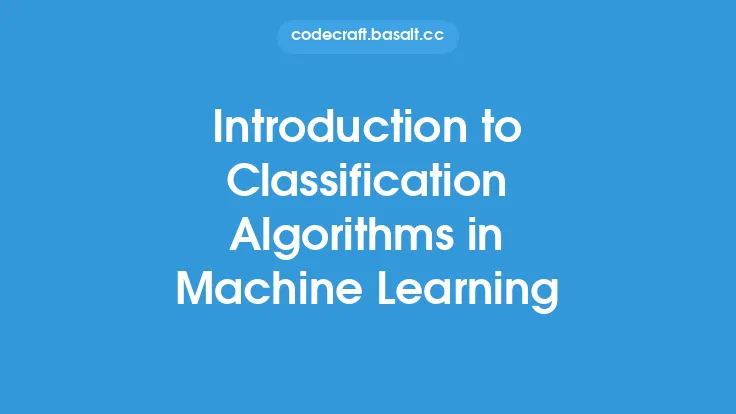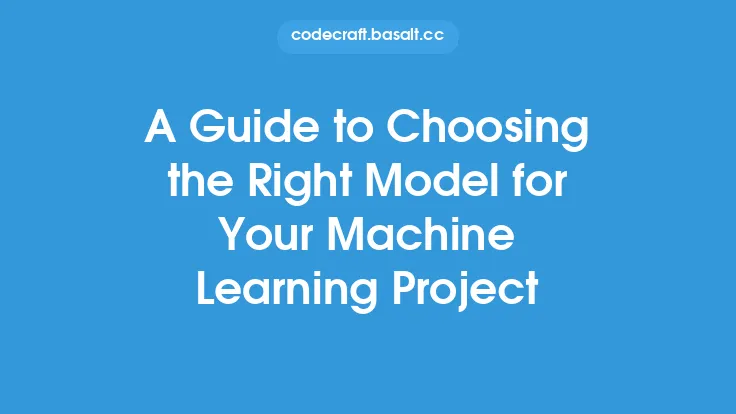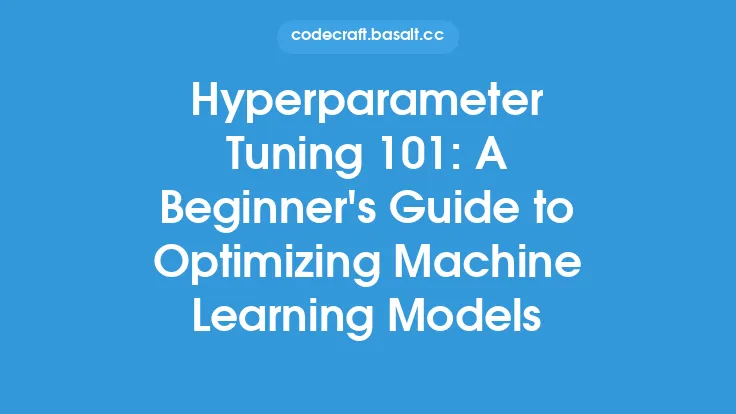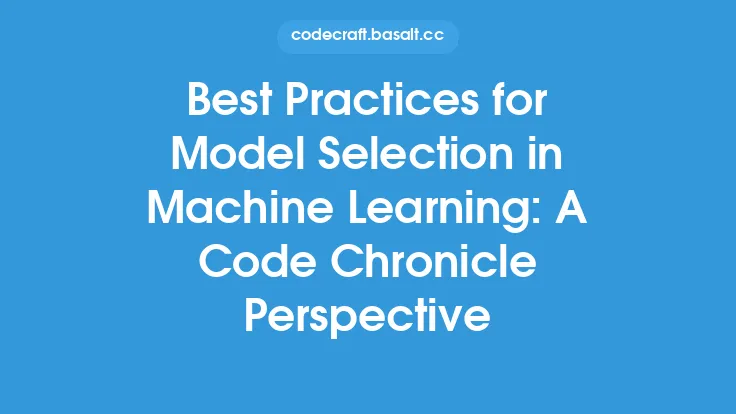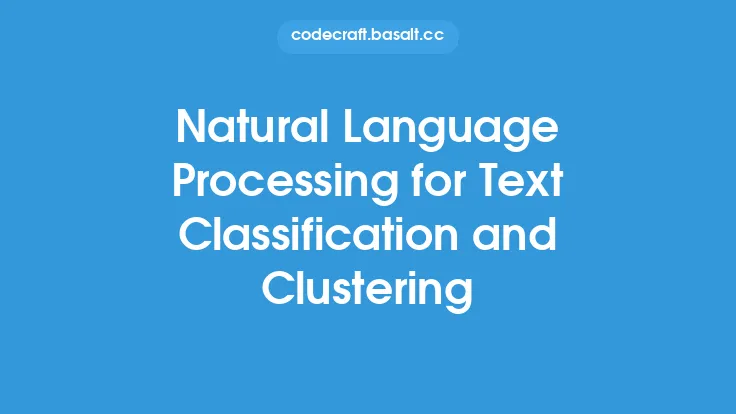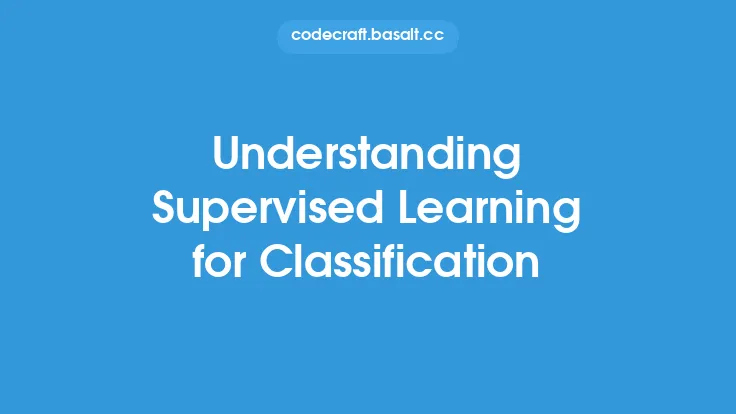Naive Bayes is a family of probabilistic machine learning models that are based on Bayes' theorem. It is a simple, yet effective approach to classification problems, and is widely used in many applications, including text classification, sentiment analysis, and recommender systems. The Naive Bayes algorithm is based on the idea of using Bayes' theorem to calculate the probability of a particular class given a set of features.
Introduction to Bayes' Theorem
Bayes' theorem is a mathematical formula that describes the probability of an event occurring given some prior knowledge of the event. It is named after Thomas Bayes, who first proposed it in the 18th century. The theorem states that the probability of an event A occurring given some evidence B is equal to the probability of the evidence B occurring given the event A, multiplied by the probability of the event A occurring, divided by the probability of the evidence B occurring. This can be expressed mathematically as:
P(A|B) = P(B|A) \* P(A) / P(B)
In the context of classification, Bayes' theorem can be used to calculate the probability of a particular class given a set of features. For example, in a text classification problem, we might want to calculate the probability that a document belongs to a particular class (e.g. spam or not spam) given the words it contains.
The Naive Bayes Algorithm
The Naive Bayes algorithm is a simple implementation of Bayes' theorem for classification problems. It is called "naive" because it makes a simplifying assumption that the features are independent of each other, given the class. This means that the algorithm assumes that the presence or absence of one feature does not affect the presence or absence of another feature.
The Naive Bayes algorithm works as follows:
- Calculate the prior probability of each class: This is the probability of each class occurring before we see any data.
- Calculate the likelihood of each feature given each class: This is the probability of each feature occurring given each class.
- Calculate the posterior probability of each class given the features: This is the probability of each class occurring given the features, using Bayes' theorem.
- Choose the class with the highest posterior probability: This is the predicted class.
Types of Naive Bayes
There are several types of Naive Bayes algorithms, including:
- Multinomial Naive Bayes: This is used for features that are discrete and have multiple values. For example, in a text classification problem, the features might be the words in the document.
- Bernoulli Naive Bayes: This is used for features that are binary (i.e. they have only two values). For example, in a text classification problem, the features might be the presence or absence of a particular word.
- Gaussian Naive Bayes: This is used for features that are continuous and follow a Gaussian distribution. For example, in an image classification problem, the features might be the pixel values.
Advantages and Disadvantages
The Naive Bayes algorithm has several advantages, including:
- Simple to implement: The Naive Bayes algorithm is relatively simple to implement, especially when compared to more complex algorithms like support vector machines or random forests.
- Fast to train: The Naive Bayes algorithm is fast to train, even on large datasets.
- Interpretable results: The Naive Bayes algorithm provides interpretable results, in the form of probabilities for each class.
However, the Naive Bayes algorithm also has some disadvantages, including:
- Assumes independence: The Naive Bayes algorithm assumes that the features are independent of each other, given the class. This is often not the case in real-world problems.
- Sensitive to noise: The Naive Bayes algorithm can be sensitive to noise in the data, especially if the noise is correlated with the class.
- Not suitable for complex problems: The Naive Bayes algorithm is not suitable for complex problems, where the relationships between the features and the class are non-linear.
Real-World Applications
The Naive Bayes algorithm has many real-world applications, including:
- Text classification: The Naive Bayes algorithm is widely used in text classification problems, such as spam detection and sentiment analysis.
- Sentiment analysis: The Naive Bayes algorithm can be used to analyze the sentiment of text, such as determining whether a review is positive or negative.
- Recommender systems: The Naive Bayes algorithm can be used in recommender systems, to recommend products or services based on a user's past behavior.
- Medical diagnosis: The Naive Bayes algorithm can be used in medical diagnosis, to diagnose diseases based on symptoms and test results.
Conclusion
The Naive Bayes algorithm is a simple, yet effective approach to classification problems. It is based on Bayes' theorem, and assumes that the features are independent of each other, given the class. The algorithm has many advantages, including simplicity, speed, and interpretability, but also has some disadvantages, including sensitivity to noise and assumptions of independence. Despite these limitations, the Naive Bayes algorithm has many real-world applications, and is widely used in many fields, including text classification, sentiment analysis, and recommender systems.
